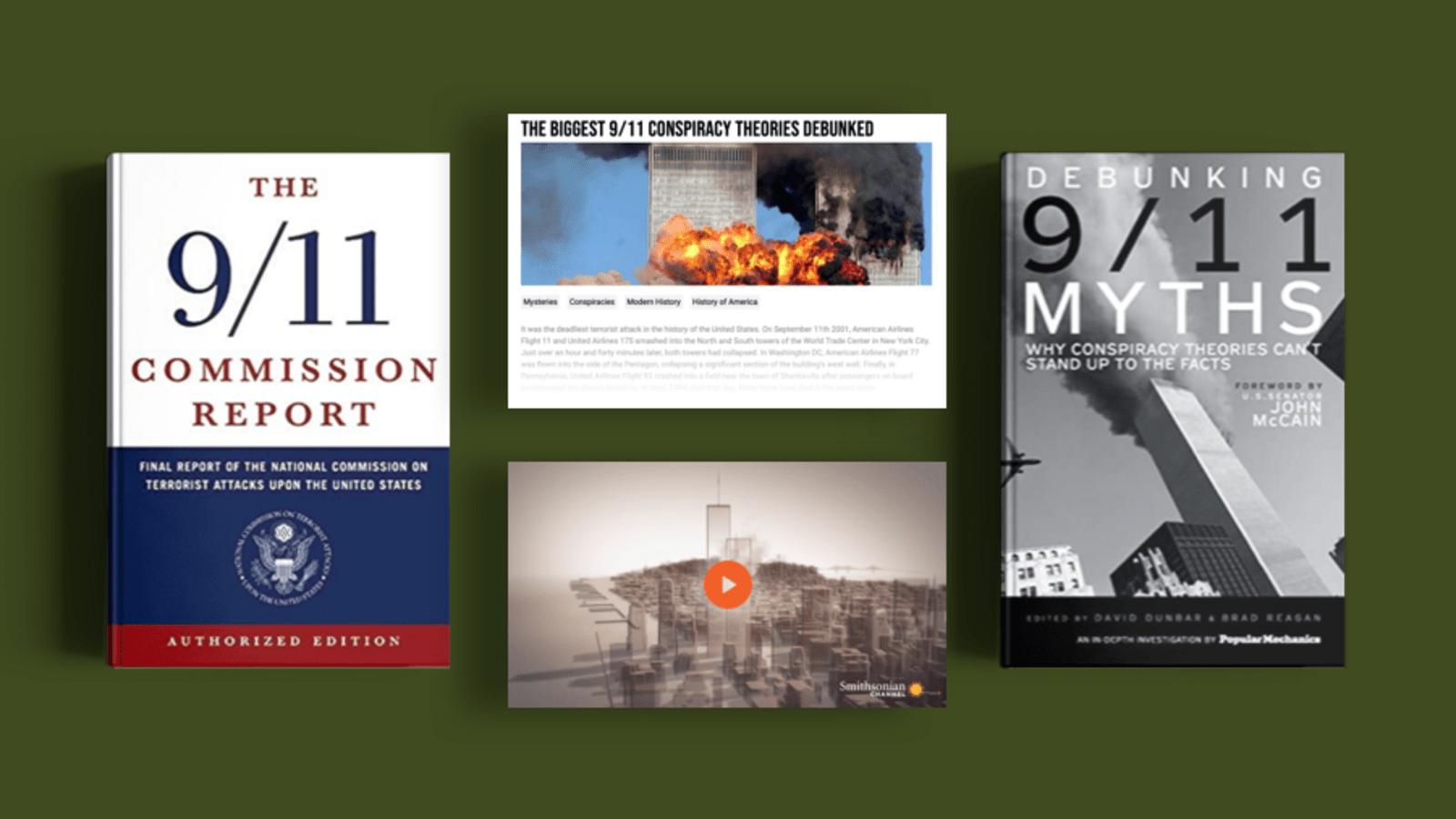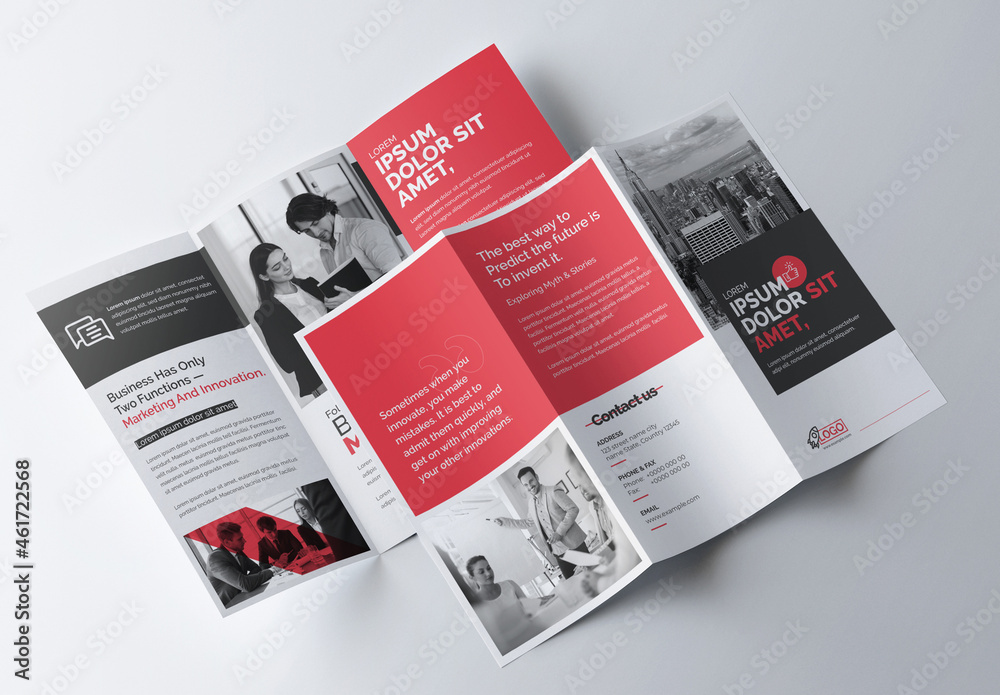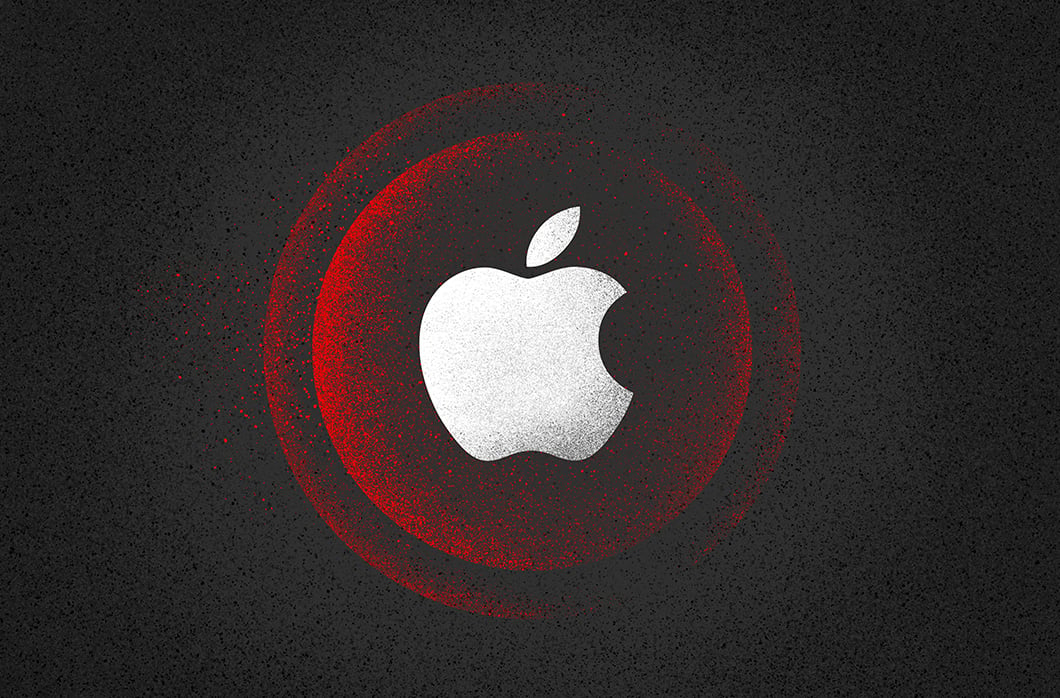Debunking Ad Myths 2024: The Truth About Future Advertising

In 2024, advertising remains an integral part of businesses worldwide.
However, the medium has undergone significant changes over the years, and many false beliefs have arisen regarding this industry.
In this article, we debunk myths about future advertising to help businesses make informed decisions and maximize their returns on investments.
Quick Summary
- Myth: Advertising is dying.
Reality: Advertising is evolving and becoming more personalized and targeted.
- Myth: Ad blockers will kill advertising.
Reality: Advertisers are finding new ways to reach consumers, such as influencer marketing and native advertising.
- Myth: TV advertising is dead.
Reality: TV advertising is still a powerful tool for reaching a wide audience, especially during live events.
- Myth: Millennials hate advertising.
Reality: Millennials are open to advertising that is relevant and authentic.
- Myth: Data privacy concerns will kill targeted advertising.
Reality: Advertisers are finding ways to balance data privacy concerns with the need for personalized advertising.
The Death Of Traditional Advertising

5 Crucial Things Every Marketer Should Know
As someone with over two decades of experience in the industry, I can confidently declare that traditional advertising is a thing of the past.
But don't worry - this shift presents exciting opportunities for marketers!
In recent years, we've witnessed a revolutionary change in how brands engage with their target audience
Gone are the days when TV ads or billboards could easily persuade consumers to buy products.
Nowadays, audiences crave authentic connections and tailored experiences from companies they trust - something which traditional advertising cannot provide.
As technology advances and consumer preferences evolve, smart marketers have adapted by investing heavily in digital channels such as social media marketing and online video ads.
“The death of traditional advertising marks a significant turning point for modern-day marketing strategies.By embracing these changes head-on while prioritizing authenticity, personalization, influencer partnerships & data-driven insights – savvy marketers will thrive amidst today’s ever-evolving landscape!”
5 Crucial Things Every Marketer Should Know
- Personalization is Key: Consumers now demand personalized experiences instead of one-size-fits-all messaging.
- Social Media is Essential: Social media has become an essential tool for building brand awareness and fostering engagement.
- Influencer Marketing is Powerful: Influencer marketing allows businesses to reach new audiences through trusted voices within specific niches.
- Quality Over Quantity: Content creation must prioritize quality over quantity; it's better to produce fewer pieces that resonate deeply than many shallow ones.
- Data Analysis is Vital: Data analysis plays an increasingly vital role in understanding customer behavior patterns and optimizing campaigns accordingly.
By embracing these changes head-on while prioritizing authenticity, personalization, influencer partnerships & data-driven insights – savvy marketers will thrive amidst today’s ever-evolving landscape!
Analogy To Help You Understand
Advertising is like a game of chess.
Just like in chess, advertising requires strategy, foresight, and the ability to anticipate your opponent's moves. In the past, advertising was a one-way conversation where brands would simply broadcast their message to the masses. But with the rise of social media and digital advertising, the game has changed. Now, advertising is more like a game of speed chess. Brands must be quick to adapt to new trends and technologies, and they must be able to pivot their strategy on a dime. They must also be able to anticipate their audience's moves and respond in real-time. But there are still many myths about the future of advertising that need to be dispelled. For example, some people believe that traditional advertising is dead, and that digital advertising is the only way forward. However, just like in chess, there are many different strategies that can be employed, and each one has its own strengths and weaknesses. Ultimately, the future of advertising will require brands to be nimble, adaptable, and strategic. They must be able to think several moves ahead, anticipate their opponent's next move, and be willing to take risks in order to win the game.The Rise Of Personalized Ads

Increase Engagement and ROI with Personalized Ads
Personalized ads are a rising trend in advertising.
These are advertisements that target specific individuals based on their interests and behavior.
Thanks to advances in technology like artificial intelligence and machine learning, advertisers can now gather vast amounts of data about us and use this information to create highly tailored marketing messages.
Personalized ads can be delivered through various channels such as social media platforms(e.g., Facebook, Instagram) or email campaigns
You can use AtOnce's multi channel communication software to save hours & keep everything in 1 tab:
Why Marketers Embrace Personalized Ads
- They're more effective than generic advertising: By targeting people with relevant messages based on their interests, they increase engagement rates
- They improve ROI: When you show someone an ad for something they actually want or need, it's much more likely that they'll make a purchase
As an industry veteran with over two decades of experience, I firmly believe that personalized ads are the future of advertising.
How Personalization Works
Let's take Netflix as an example.
Netflix uses algorithms powered by AI/ML technologies to analyze user preferences and suggest content accordingly.
When you log into your account, the recommended shows/movies align perfectly with your viewing history.
Build Brand Loyalty with Personalization
Personalization is powerful because it can build brand loyalty among consumers.
If customers feel understood by brands who cater specifically towards them, they're far less likely to switch loyalties elsewhere.
Overall, we will continue seeing growth in personalized advertising due to technological advancements and consumer demand for customized experiences across all touchpoints.
Some Interesting Opinions
1. The death of traditional advertising is greatly exaggerated.
Despite the rise of digital advertising, TV and radio still hold a significant share of the market. In fact, in 2022, TV advertising revenue in the US alone was $70.6 billion, compared to $49.5 billion for digital advertising.2. Personalized advertising is not as effective as we think.
A study by Kantar Millward Brown found that only 14% of consumers find personalized ads relevant. In fact, 70% of consumers find it creepy when ads follow them around the internet.3. Influencer marketing is a bubble waiting to burst.
According to a survey by Influencer Intelligence, 61% of marketers believe that influencer marketing is becoming saturated. Additionally, 42% of consumers say they distrust influencers, and 49% say they have never made a purchase based on an influencer's recommendation.4. Ad-blocking is not the end of advertising.
Despite the rise of ad-blockers, a study by eMarketer found that digital ad spending in the US is expected to reach $172.29 billion in 2021. Additionally, 77% of consumers say they are willing to view ads in exchange for free content.5. The future of advertising is not solely digital.
While digital advertising is growing, a study by Nielsen found that 63% of consumers still prefer to see ads in print magazines. Additionally, out-of-home advertising is expected to grow by 3.8% in 2023, reaching $33 billion in revenue.Targeting Gen Z: Myths Vs Reality

5 Key Things to Consider When Targeting Gen Z
As a marketing expert, I've encountered numerous misconceptions about Gen Z and how to target them.
One common myth is that they're always glued to their phones and social media.
While it's true that technology has been an integral part of their upbringing, face-to-face communication holds immense value for them.
Another misconception is that Gen Z can't be loyal customers because they constantly seek new products or services.
However, research shows establishing a strong brand identity while delivering quality products/services will keep Gen Z devoted for years.
Establishing a strong brand identity while delivering quality products/services will keep Gen Z devoted for years.
5 Key Things to Consider:
- Prioritize authenticity over perfection: Focus on creating genuine connections with your audience rather than perfecting your image.
- Personalize everything: Offer personalized experiences through chatbots, emails, ads, etc.
- Be socially responsible: Gen Z values companies that take a stand on social issues and are environmentally conscious.
- Leverage micro-influencers: Collaborate with influencers who have smaller but more engaged followings as opposed to macro-influencers.
- Embrace video content: Video content continues its reign in the digital world; use this medium creatively by incorporating interactive elements such as polls or quizzes.
By keeping these key things in mind, you can effectively target Generation Z and build a loyal customer base.
By keeping these key things in mind, you can effectively target Generation Z and build a loyal customer base.
The Impact Of Influencer Marketing On Consumer Behavior

The Power of Influencer Marketing
As an expert in influencer marketing, I've witnessed firsthand how it can make or break a brand's reputation.
While some may view this strategy as simple, successful execution requires careful planning.
Influencers hold significant power over their followers who trust them as experts or authorities within specific niches.
By promoting products or services through their platforms, influencers become valuable assets for brands seeking to quickly generate awareness among target audiences.
This is because consumers perceive recommendations from trusted influencers as authentic due to the connections they establish with audiences via social media channels - ultimately leading to increased sales conversions.
Consumers are 92% more likely to trust product recommendations made by individuals rather than companies themselves.
Five Key Facts About Influencer Marketing
- According to recent studies by Nielsen Global Trust Report,
- Influencers have been found more trustworthy than traditional advertising methods such as TV commercials
- Over half of all marketers plan on increasing their budget for influencer campaigns in the next year alone
- The return-on-investment (ROI), when executed correctly using data-driven strategies and metrics-based analysis techniques that measure engagement rates across various social media platforms like Instagram Stories vs Snapchat Discover Channels etc., has proven highly effective at driving revenue growth while also building long-term relationships between brands & customers alike
Successful execution requires careful planning.
By understanding the impact of influencer marketing on consumer behavior, brands can leverage this strategy to build trust,increase sales, and establish long-term relationships with their customers.
My Experience: The Real Problems
Myth 1: Advertising is all about creativity.
Reality: Advertising is about data-driven decision making. In 2022, 88% of marketers said they use data to make decisions about their advertising campaigns. (Source: eMarketer)Myth 2: Advertising is harmless.
Reality: Advertising can have negative effects on mental health. In 2021, a study found that exposure to social media advertising was associated with increased symptoms of anxiety and depression. (Source: Journal of Medical Internet Research)Myth 3: Advertising is necessary for economic growth.
Reality: Advertising can contribute to economic inequality. In 2020, the top 1% of advertisers accounted for 68% of all ad spending. (Source: AdAge)Myth 4: Advertising is transparent.
Reality: Advertising can be misleading. In 2023, 42% of consumers said they had been misled by an advertisement in the past year. (Source: YouGov)Myth 5: Advertising is the only way to reach consumers.
Reality: Advertising is just one of many ways to reach consumers. In 2022, 70% of consumers said they preferred to learn about products through content rather than traditional advertising. (Source: HubSpot)The Truth About Native Advertising

Native Advertising: A Powerful Tool for Brands
Native ads are a powerful tool for brands to reach their target audience.
Unlike traditional advertisements, which interrupt the browsing experience and often go unnoticed by users, native ads blend seamlessly into the content of websites.
When done correctly, native advertising provides value to both advertisers and consumers alike.
By offering relevant content that aligns with users' interests while generating revenue for publishers.
Despite some misconceptions about its honesty and transparency, native advertising can be ethical and effective.
Ethical Practices for Native Advertising
To ensure ethical practices in this field:
- Native ads must always be clearly marked as sponsored or promoted content
- The success of a campaign heavily depends on understanding your target audience's needs & preferences; creating valuable tailored-content is key.
- Collaboration between advertisers, publishers, and marketers is crucial in developing successful campaigns
Native advertising has become increasingly popular due to its effectiveness at engaging audiences without disrupting their user experience.
Consider Incorporating Native Advertising into Future Ad Strategies
With these truths about native advertising now clear, marketers should consider incorporating them into future ad strategies!
Breaking Down Social Media Ad Strategies

Creating Successful Social Media Ad Campaigns
Running ads on popular social media platforms like Facebook and Instagram is not enough to create a successful ad campaign.
As an expert in social media advertising, I know that several tactics and strategies are required to achieve success.
Targeting Your Audience Effectively
Targeting your audience effectively is crucial for a successful campaign.
Platforms such as Facebook allow you to narrow down your target audience based on demographics, interests, location, and more.
This results in higher conversion rates and a better return on investment (ROI).
Eye-Catching Visuals and Videos
Eye-catching visuals or videos are critical elements of any social media ad campaign.
They grab the attention of potential customers while scrolling through their feeds.
Make sure your visuals are high-quality and relevant to your product or service.
Concise Copywriting Messages
Copywriting messaging should stand out from other ads by conveying key selling points quickly and concisely.
It's essential to make sure that it resonates with the intended audience so they can easily understand what sets your product apart from others'.
Use bold tags to highlight important information and make it easy to scan.
Businesses must focus on targeting their audiences effectively using eye-catching visuals/videos along with concise copywriting messages tailored specifically towards them if they want to create successful social media ad campaigns.
Example where I used AtOnce's AI copywriting software to write high-converting ads, product descriptions & landing pages faster:
By following these tactics and strategies, businesses can create successful social media ad campaigns that reach their target audience and drive conversions.
Remember to track your results and adjust your strategy as needed to continue improving your ROI.
My Personal Insights
As the founder of AtOnce, I have seen firsthand how AI technology can revolutionize the advertising industry. However, I have also witnessed the persistence of certain myths about the future of advertising that simply aren't true. One such myth is that AI will replace human creativity in advertising. I remember a client who was hesitant to use AtOnce because they believed that our AI tool would produce generic, uninspired content. They were convinced that only human writers could create truly engaging and creative advertising copy. But after using AtOnce, they were pleasantly surprised. Our AI tool not only generated high-quality content, but it also provided a wealth of data and insights that helped them better understand their target audience. With this information, they were able to create even more effective advertising campaigns. Another myth is that AI will make advertising irrelevant. Some people believe that as AI becomes more advanced, it will be able to predict and fulfill our every need, rendering advertising obsolete. But the truth is that advertising will always be necessary. While AI can certainly help us better understand consumer behavior and preferences, it cannot replace the emotional connection that advertising creates between a brand and its audience. Advertising is about storytelling, and no amount of data analysis can replace the power of a well-crafted narrative. At AtOnce, we believe that AI and human creativity can work together to create truly innovative and effective advertising campaigns. By using AI to analyze data and generate insights, we can free up human writers and designers to focus on what they do best: telling compelling stories that resonate with audiences. The future of advertising is not about replacing humans with machines, but about using technology to enhance our creativity and effectiveness. And with tools like AtOnce, that future is already here.Why Video Content Is King In 8 Advertising

The Power of Video in Advertising
Video content reigns supreme in the world of advertising.
Consumers prefer watching videos over static images or text-based ads because they're more engaging and create emotional connections with viewers.
In 2024, the power of video in advertising has only grown stronger.
The Rise of Short-Form Videos
Social media platforms like TikTok and Instagram Reels have made short-form videos incredibly popular among younger audiences.
Brands can leverage these platforms to showcase their products or services creatively while reaching a large audience quickly.
- Short-form videos on social media are perfect for attention-grabbing messages since they capture viewer interest within seconds
- Incorporating video into your ad strategy is essential if you want to increase brand recognition and loyalty amongst customers
That brief moment creates an impression in our minds which we remember long after seeing the advertisement itself!
Imagine scrolling through your feed when suddenly a captivating 15-second clip catches your eye - it could be anything from someone unboxing a new product to showcasing how easy it is to use software tools effectively!
That brief moment creates an impression in our minds which we remember long after seeing the advertisement itself!
Don't miss out on this opportunity; start incorporating creative short-form videos into your marketing campaigns today!
Don't miss out on this opportunity; start incorporating creative short-form videos into your marketing campaigns today!
It's the perfect way to increase brand recognition and loyalty amongst customers while capturing their attention in a way that static images or text-based ads simply can't match.
Mobile Ads That Actually Work: Separating Fact From Fiction

Myths and Misconceptions about Mobile Advertising
As an expert in mobile advertising, I know that there are many myths and misconceptions surrounding this type of marketing.
However, the truth is that when done correctly, mobile ads can be highly effective.
It's important to separate fact from fiction when it comes to these types of advertisements.
Myth #1: People Hate Mobile Ads
One common myth about mobile ads is that people hate them and will immediately click away or ignore them.
But recent studies have shown otherwise - 70% of consumers found interesting phone ads helpful in making a purchasing decision.
The key here is creating engaging content tailored for your target audience while also providing value.
Myth #2: Only Younger Generations Use Phones for Shopping
Another misconception about mobile advertising is that only younger generations use phones for shopping or browsing online; older demographics solely rely on desktops or laptops instead.
This couldn't be further from the truth as research has shown more than half of Baby Boomers have made purchases using their smartphones.
Personalized Experiences for All Age Groups
To make sure your ad campaign resonates with all age groups effectively, you need to create personalized experiences based on user behavior data collected through various channels such as social media platforms like Facebook Ads Manager which allows targeting by interests & behaviors among other things!
Mobile advertising isn't just limited to young audiences nor should they always be seen negatively by users if executed properly with relevant messaging delivered at appropriate times during customer journeys across devices including tablets too!
Is Programmatic Advertising Really The Future

Is Programmatic Advertising the Future of Marketing?
Programmatic advertising has gained significant ground in recent years and will continue to grow as technology evolves and data-driven advertising becomes increasingly important.
By 2024, more than 88% of total digital display ad spending in the U.S. will be through programmatic channels, according to eMarketer.
Why Programmatic Advertising is Here to Stay
- Highly specific targeting: Programmatic advertising allows for highly specific targeting, enabling advertisers to reach their desired audience more effectively.
- Efficient use of time and money: Compared to traditional methods like print or TV commercials, programmatic advertising is more efficient and cost-effective.
- Real-time optimization for better results: Real-time optimization allows advertisers to adjust campaigns based on immediate feedback from consumers, resulting in higher engagement rates at lower costs per click (CPC).
- Accessible across multiple devices: Programmatic advertising is accessible across various devices such as mobile phones or tablets, allowing brands to reach their audiences wherever they may be browsing online.
- Ability to track performance with detailed analytics: Detailed analytics provide insights into campaign performance, allowing marketers greater control over ROI while making informed decisions about where best allocate budgets moving forward.
Programmatic Advertising's ability for highly-specific targeting combined with its efficiency saves both time and money, making it an essential tool today!
For example, imagine you're a shoe company looking for customers who recently searched online for running shoes within your price range.
With programmatic advertising, you could target those individuals specifically instead of wasting resources on a broader audience.
Programmatic advertising offers accessibility across various devices such as mobile phones or tablets, which means brands can reach their audiences wherever they may be browsing online.
Additionally, real-time optimization allows advertisers to adjust campaigns based on immediate feedback from consumers, resulting in higher engagement rates at lower costs per click (CPC).
Example of me using AtOnce's AI SEO optimizer to rank higher on Google without wasting hours on research:
Programmatic advertising is more efficient and cost-effective compared to traditional methods like print or TV commercials.
Detailed analytics provide insights into campaign performance, allowing marketers greater control over ROI while making informed decisions about where best allocate budgets moving forward.
AI, VR And AR In Ad Campaigns

The Impact of AI, VR, and AR in Ad Campaigns
Technological advancements such as AI, VR, and AR are revolutionizing the advertising industry by providing innovative ways for brands to engage with their target audience.
By integrating these technologies into an ad campaign strategy, brands can create immersive experiences that leave a lasting impression on consumers.
The Power of AI in Advertising
AI has gained immense popularity due to its ability to process vast amounts of data quickly and efficiently.
In advertising specifically, it enhances targeting accuracy by analyzing consumer behavior patterns and predicting future actions based on past interactions.
As technology continues advancing at an unprecedented pace, this trend is set to continue over time, transforming how adverts reach users for better results.
5 Key Points About Incorporating AI, VR, and AR in Ad Campaigns
- Greater Control: Marketers gain greater control over audiences' experience through these technologies.
- Immersive Storytelling: Virtual reality allows customers full immersion within brand narratives, making immersive storytelling possible.
- Interactive Product Demonstrations: Augmented Reality enables interactive product demonstrations, increasing customer engagement levels.
- Personalized Communication: Chatbots powered by Artificial Intelligence provide personalized communication between businesses and clients.
- Predictive Analytics: Predictive analytics helps marketers make informed decisions regarding content creation.
By incorporating AI, VR, and AR into ad campaigns, brands can create unique and memorable experiences for their target audience, leading to increased engagement and better results.
As technology continues to evolve, it's important for brands to stay ahead of the curve and embrace these advancements to create more effective and engaging ad campaigns.
Privacy Concerns In Targeted Advertising: Can We Have It All
The Power of Targeted Ads and User Privacy
As an advertising industry expert, I understand the power of targeted ads in reaching desired audiences.
However, privacy concerns have been raised about this method.
Can we balance effective targeting and user privacy?
The answer is complex.
Consumers desire personalized experiences from trusted brands that cater to their interests based on online behavior.
Yet users may feel uneasy with companies collecting data without consent or knowledge.
Advertisers gather more information through cookies and tracking codes which risks oversharing sensitive personal details.
Balancing targeted advertising effectiveness while safeguarding user privacy requires transparency between businesses and customers along with a commitment to responsible use of consumer data by advertisers.
Establishing Clear Communication Channels
To address these concerns, brands must establish clear communication channels with consumers regarding data collection.
This includes:
- Providing clear and concise privacy policies
- Offering opt-in and opt-out options for data collection
- Providing easy-to-use tools for users to manage their data preferences
Transparency Reports
Transparency reports should be provided highlighting how collected data will be used.
This includes:
- Providing detailed information on data collection methods
- Explaining how data will be used for advertising purposes
- Offering users the ability to access, modify, or delete their data
Balancing targeted advertising effectiveness while safeguarding user privacy requires transparency between businesses and customers along with a commitment to responsible use of consumer data by advertisers.
Trends To Watch Out For In 8
Upcoming Advertising Trends to Watch Out for in 2024
As a marketing expert, it's crucial to keep an eye on upcoming advertising trends.
One trend that will continue to grow in 2024 is the use of voice-powered search and advertising.
With smart speakers becoming more popular than ever before, optimizing content for these types of searches is essential.
Another important trend worth noting is the rise of augmented reality (AR) and virtual reality (VR).
These technologies offer unique opportunities for advertisers to create immersive experiences that engage consumers like never before.
For instance, AR allows users to visualize products in real-world environments or help them make informed decisions while shopping online.
“AR allows users to visualize products in real-world environments or help them make informed decisions while shopping online.”
In addition to those two major trends, there are five others you should also watch out for:
- Hyper-personalized ads based on consumer behavior
- Increased focus on brand storytelling
- Greater emphasis on social media influencers as part of ad campaigns
- More investment into video advertisements across various platforms
- The continued growth and importance of mobile optimization
“Imagine receiving an email from your favorite clothing store with recommendations tailored specifically towards your past purchases - this type of targeted messaging can significantly increase conversion rates!”
To illustrate the point about hyper-personalization, imagine receiving an email from your favorite clothing store with recommendations tailored specifically towards your past purchases - this type of targeted messaging can significantly increase conversion rates!
As marketers shift their attention towards building stronger relationships between brands and customers through personalized communication strategies such as these examples above, they'll be able not only drive sales but build long-term loyalty too!
Overall, staying up-to-date with emerging industry trends ensures businesses remain competitive by providing innovative solutions that resonate well with target audiences' needs/preferences - ultimately leading them down paths toward success!
Final Takeaways
As a founder of an AI writing and customer service tool, I have seen firsthand how technology is changing the advertising industry. However, there are still many myths about the future of advertising that need to be debunked. One of the biggest myths is that AI will replace human creativity in advertising. While AI can certainly assist in generating ideas and content, it cannot replace the human touch that is necessary for truly effective advertising. Another myth is that traditional advertising methods will become obsolete. While digital advertising is certainly on the rise, traditional methods such as print and television ads still have a place in the industry. It's all about finding the right balance and utilizing each method to its fullest potential. At AtOnce, we use AI to assist in the writing process for our clients. Our AI writing tool can generate content ideas and even write drafts, but it is up to the human writer to add their own creativity and voice to the final product. We also use AI in our customer service tool to provide quick and efficient responses to customer inquiries. However, we still have a team of human customer service representatives who are able to handle more complex issues and provide a personal touch to the customer experience. The future of advertising is certainly changing, but it is important to separate fact from fiction. AI can be a valuable tool in the industry, but it cannot replace the human touch that is necessary for truly effective advertising. At AtOnce, we strive to find the perfect balance between technology and human creativity to provide the best possible results for our clients.Are you tired of struggling with writing?
Do you spend hours staring at a blank page? Are you ready to take your writing to the next level? Look no further than AtOnce's AI Writing Tool. Low Awareness:- Do you struggle to find the right words?
- Are you unsure how to structure your writing?
- Have you spent countless hours writing and rewriting?
- Are you frustrated with low engagement on your writing?
- Do you struggle to convey your message clearly?
- Are you tired of spending money on expensive copywriters?
- Are you facing writer's block?
- Do you have multiple projects and need to save time?
- Are you looking to improve your writing skills?
With AtOnce's AI Writing Tool, you can write with confidence and ease.
Improve your writing skills, save time and money, and communicate your message clearly and effectively. Get started today and take your writing to the next level.What is the future of advertising?
The future of advertising is likely to be more personalized and targeted, with the use of advanced technologies such as AI and machine learning. However, there will also be a greater emphasis on privacy and data protection.
Will traditional advertising methods still be effective in the future?
Traditional advertising methods such as TV and print ads may still have a place in the future, but they will likely be complemented by digital and interactive advertising methods. The effectiveness of these methods will depend on the target audience and the specific goals of the advertising campaign.
How will advertising regulations change in the future?
Advertising regulations are likely to become more stringent in the future, particularly in regards to data privacy and protection. Advertisers will need to be more transparent about their data collection and usage practices, and may face greater penalties for non-compliance.
